The Porsche Cayenne, introduced in 2003, marked a significant milestone as the brand’s first SUV, blending luxury with performance․ The manual transmission option, available in select trims, offers a unique driving experience, combining precision control with the robust capabilities of an SUV․ This article explores the intricacies of the Cayenne’s manual transmission, its historical development, and its appeal to driving enthusiasts․
1․1 Overview of the Porsche Cayenne
The Porsche Cayenne, introduced in 2003, represents a fusion of luxury, performance, and versatility․ As the brand’s first SUV, it quickly gained recognition for its dynamic handling and powerful engine options․ The Cayenne was designed to appeal to a broader audience while maintaining Porsche’s reputation for precision engineering and driving excellence․
Available with a range of engines, including V6 and V8 options, the Cayenne offered a manual transmission in select trims, particularly in earlier generations․ This feature catered to driving enthusiasts who valued direct control and a more engaging experience․ Despite its size, the Cayenne’s manual transmission models delivered a unique blend of practicality and sporty performance, making them highly sought after by purists and collectors․
1․2 Importance of Manual Transmission in Driving Experience
A manual transmission enhances the driving experience by offering direct control and a deeper connection to the vehicle․ It allows drivers to engage more actively with the road, fostering a sense of precision and involvement․ For enthusiasts, the manual gearbox in the Cayenne provides a sporty, hands-on feel that complements its powerful engine options․ The ability to shift gears manually adds a layer of satisfaction and personalization to the drive, making it a preferred choice for purists․ Despite the rise of automatic transmissions, the manual option remains a sought-after feature for those who value driving dynamics and tactile engagement․
1․3 Purpose of the Article
This article aims to provide a comprehensive guide to the Cayenne’s manual transmission, focusing on its history, technical aspects, and driving characteristics․ It explores the evolution of the manual gearbox across different generations of the Cayenne and its significance in enhancing the driving experience․ The purpose is to inform enthusiasts and potential buyers about the unique features, benefits, and challenges of manual transmission models․ By detailing maintenance tips, performance capabilities, and market trends, this guide seeks to serve as a valuable resource for those interested in the Porsche Cayenne’s manual transmission options, offering insights that help in making informed decisions․

History of the Cayenne and Its Transmission Options
The Porsche Cayenne debuted in 2003, offering manual transmissions in early models like the GTS, appealing to driving enthusiasts before shifting to automatics in later years․
2․1 First-Generation Cayenne (2003-2010)
The first-generation Porsche Cayenne, introduced in 2003, marked the brand’s entry into the SUV market․ Initially, the Cayenne was available with a range of engines, including a V6 and V8, and featured both manual and automatic transmission options․ The six-speed manual transmission was offered in base and S models, providing a sporty, driver-focused experience․ However, the manual option was relatively rare, particularly in higher trims like the Turbo․ The Cayenne GTS, introduced later in this generation, also featured a manual transmission, further enhancing its appeal to driving enthusiasts․ This generation laid the foundation for the Cayenne’s reputation as a performance-oriented SUV with a focus on dynamic handling․
2․2 Second-Generation Cayenne (2011-2017)
The second-generation Porsche Cayenne, introduced in 2011, saw significant updates, including a lighter chassis and improved fuel efficiency․ Manual transmission availability remained limited, primarily offered in base models such as the V6․ Enthusiasts appreciated the six-speed manual for its tactile driving experience, but it became increasingly rare․ Higher trims, including Turbo and Turbo S, were exclusively automatic, reflecting the market’s shift toward convenience․ Despite its rarity, the manual transmission in the second-gen Cayenne retained its charm, appealing to purists who valued driver engagement․ This generation marked a turning point, as automatics gained prominence, further limiting the manual’s availability in subsequent years․
2․3 Third-Generation Cayenne (2018-Present)
The third-generation Porsche Cayenne, launched in 2018, introduced cutting-edge technology and refined performance․ Manual transmissions became even more exclusive, offered only in select base models․ The GTS and Turbo variants were exclusively automatic, catering to the majority who prioritized convenience․ Enthusiasts who sought the manual transmission experienced a more engaging drive, but its availability diminished significantly․ As the market leaned heavily toward automatics, Porsche continued to phase out manual options, leaving the manual Cayenne as a niche choice for purists․ This generation marked a clear shift toward modernization, with the manual transmission serving as a rare nod to traditional driving dynamics․
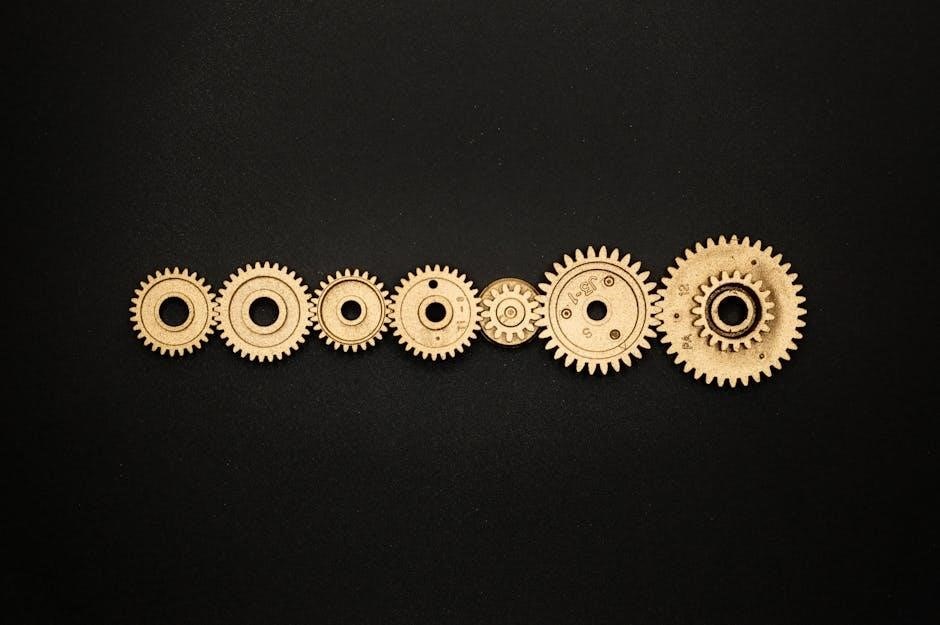
Technical Specifications of the Cayenne Manual Transmission
The Cayenne’s manual transmission, featured in select 955/957 models, is a 6-speed unit designed for durability and precise shifting․ It pairs well with the V6 and V8 engines, delivering smooth power delivery and driver engagement through its mechanical design․
3․1 Types of Manual Transmissions Used
The Cayenne utilized a six-speed manual transmission, primarily sourced from ZF, known for its robustness and precise gear engagement․ This transmission was available across various trims, including the base V6 model, Cayenne S, and the GTS, Each featured a similar six-speed configuration, tailored to match engine capabilities․ The ZF unit was praised for its smooth shifting and durability, making it a reliable choice for drivers seeking a manual driving experience in an SUV․ This setup remained consistent across generations, offering enthusiasts a consistent and engaging driving experience․ The ZF transmission became synonymous with the Cayenne’s manual offerings, ensuring a blend of performance and reliability․
3․2 Gear Ratios and Performance Capabilities
The Cayenne’s six-speed manual transmission features gear ratios optimized for both acceleration and highway cruising, providing a balanced driving experience․ The first gear offers ample torque for quick starts, while higher gears ensure smooth power delivery at higher speeds․ The GTS model, equipped with the 4․8-liter V8, accelerates from 0-100 km/h in 6․1 seconds, reaching a top speed of 253 km/h․ This performance is enhanced by the manual transmission’s precise control, allowing drivers to fully exploit the engine’s potential․ The gear ratios are well-suited for the Cayenne’s weight and power output, delivering a responsive and engaging drive, making it one of the fastest petrol SUVs in its class․
3․3 Comparison with Other Porsche Models
The Cayenne’s manual transmission stands out among other Porsche models, offering a unique blend of SUV utility and sporty driving dynamics․ Unlike the 911, which is renowned for its precision and track-focused performance, the Cayenne’s manual transmission is tuned for both on-road comfort and off-road capability․ The Macan, another Porsche SUV, also features manual options but lacks the Cayenne’s higher torque and towing capacity․ The Cayenne’s six-speed manual is more robust than the Boxster’s or Cayman’s units, reflecting its role as a performance SUV․ This comparison highlights the Cayenne’s versatility, making it a standout choice for enthusiasts seeking a manual transmission in a larger vehicle without compromising on Porsche’s signature driving experience․
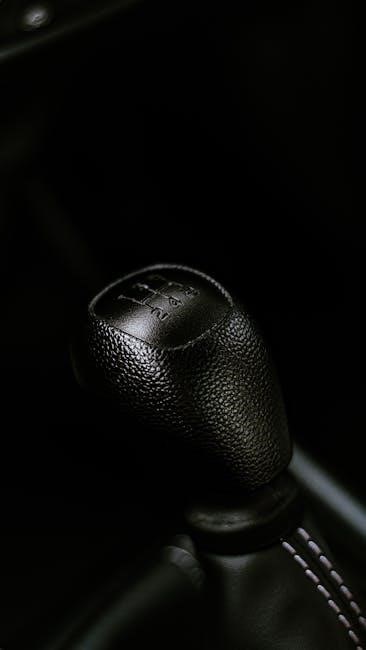
Driving Experience with the Cayenne Manual Transmission
The Cayenne’s manual transmission delivers a engaging and immersive driving experience, offering precise control and a direct connection to the vehicle’s performance, blending sporty dynamics with SUV versatility․
4․1 Benefits of Manual Transmission
The manual transmission in the Cayenne offers several advantages, including enhanced driver engagement and control․ Enthusiasts appreciate the direct connection to the vehicle’s performance, allowing for precise gear shifts that maximize power delivery and responsiveness․ Additionally, the manual transmission contributes to a more immersive driving experience, making it particularly appealing for those who value a sporty feel․ It also provides better fuel efficiency in certain driving conditions compared to automatic alternatives․ Furthermore, the manual option often results in lower maintenance and repair costs over time․ This makes it a preferred choice for drivers seeking both performance and practicality in their SUV․
4․2 Challenges and Drawbacks
The manual transmission in the Cayenne presents several challenges, particularly in modern driving scenarios․ Its use requires more driver effort and attention, especially in heavy traffic or low-speed maneuvers, where frequent gear changes can become tiring․ Additionally, the rarity of manual transmissions in the Cayenne lineup means fewer options for buyers, potentially leading to higher purchase costs․ Maintenance costs can also rise if issues arise, as specialized knowledge and parts may be required․ Furthermore, the manual transmission lacks the convenience and ease of use offered by automatic or PDK dual-clutch systems, making it less appealing for drivers prioritizing comfort and simplicity․ These factors highlight the trade-offs for those seeking a more engaging driving experience․
4․3 Real-World Performance and Handling
The Cayenne with a manual transmission delivers a unique blend of performance and driver engagement, particularly in spirited driving conditions․ The six-speed manual allows for precise gear control, enabling quick acceleration and smooth power delivery from the V8 engine․ Real-world testing shows the Cayenne GTS can achieve 0-100 km/h in 6․1 seconds, with a top speed of 253 km/h, making it one of the fastest SUVs in its class․ Handling is responsive, with minimal body roll due to its sport-tuned suspension․ However, the manual transmission’s weight and lower torque capacity compared to automatic models can slightly limit its off-road capabilities․ Despite this, the manual Cayenne remains a rare and exhilarating choice for driving enthusiasts seeking a more connected experience behind the wheel․

Maintenance and Repair of the Manual Transmission
Regular maintenance for the Cayenne’s manual transmission involves checking transmission fluid and filters․ Addressing issues early prevents costly repairs․ GTS models may require specialized attention due to their performance-oriented components․
5․1 Routine Maintenance Requirements
Regular maintenance of the Cayenne’s manual transmission involves checking and replacing the transmission fluid every 30,000 to 60,000 miles․ Inspecting the clutch system and linkage ensures smooth gear shifts․ The transmission filter should be replaced as recommended to prevent contamination․ Gaskets and seals must be checked for leaks, and the gear oil level should be maintained․ For GTS models, additional attention to the high-performance clutch is necessary․ Using genuine Porsche parts ensures compatibility and longevity․ Proper servicing prevents premature wear and maintains optimal performance, especially in high-torque applications like the Cayenne GTS․
5․2 Common Issues and Troubleshooting
Common issues with the Cayenne’s manual transmission include unexpected shifting into manual mode, clutch wear, and electrical faults․ Troubleshooting often involves checking the transmission control module and sensors․ A faulty plug on the transmission can cause warning lights to illuminate, requiring inspection without a hoist․ For models like the GTS, clutch replacements may be needed due to high torque․ Using tools like Durametric or transmission code readers can help diagnose problems․ Regular checks of the clutch pedal and gear linkage ensure smooth operation․ Addressing these issues promptly prevents further damage and maintains the transmission’s performance and reliability over time․
5․3 Cost of Repairs and Replacement
The cost of repairing or replacing the Cayenne’s manual transmission can vary significantly․ A new transmission, such as the TR-82SD, may cost between $5,000 to $8,000, depending on the model year and trim․ Labor costs for installation typically range from $1,500 to $3,000, bringing the total to $6,500 to $11,000․ Additional components like the clutch and flywheel may add $1,000 to $2,000․ A Transmission Control Unit replacement, if needed, can cost around $1,000․ For rare models, such as the GTS with a six-speed manual, parts may be harder to find, increasing costs․ Regular maintenance and addressing issues early can help avoid costly repairs or replacement․

Cayenne Manual Transmission in Different Trims
The Cayenne manual transmission was offered in select trims, including the base V6, Cayenne S, and GTS models, providing a sporty driving experience tailored to enthusiast preferences․
6․1 Base Model (V6)
The base model Cayenne, equipped with a V6 engine, was among the select trims offering a manual transmission․ This configuration provided a unique blend of practicality and driver engagement, appealing to those who sought a more hands-on driving experience without the higher cost of performance-oriented models․ The six-speed manual gearbox paired well with the V6, delivering smooth shifts and manageable power delivery, making it suitable for both daily driving and light off-road excursions․ Owners appreciated the simplicity and direct connection to the vehicle, though production numbers were limited, contributing to its rarity and exclusivity in the used market․
6․2 Cayenne S
The Cayenne S, with its powerful V8 engine, offered an optional six-speed manual transmission, enhancing its sporty character․ This combination provided drivers with a more engaging experience, leveraging the V8’s robust power delivery․ The manual gearbox allowed for precise control, appealing to enthusiasts who valued a hands-on driving experience․ Despite its performance capabilities, the manual transmission in the Cayenne S remained a niche option, contributing to its exclusivity․ Owners praised the manual for its smooth shifting and the connection it provided to the vehicle, making it a sought-after configuration among Porsche enthusiasts․ The rarity of these models has made them highly desirable in the used market․
6․3 Cayenne GTS
The Cayenne GTS, known for its dynamic performance, featured an optional six-speed manual transmission, further enhancing its sport-oriented driving experience․ This pairing allowed drivers to fully engage with the vehicle’s powerful V8 engine, delivering a more tactile and responsive drive․ The manual transmission in the GTS was particularly praised for its smooth gear transitions and precise control, making it a favorite among driving enthusiasts․ Despite its performance-focused nature, the manual GTS remained a rare configuration, contributing to its allure․ With only a limited number produced, these models are highly sought after by collectors and enthusiasts, offering a unique blend of power and manual control․
6․4 Turbo and Turbo S Models
Turbo and Turbo S models of the Cayenne were exclusively equipped with automatic transmissions, prioritizing rapid acceleration and seamless power delivery․ These high-performance variants were designed to maximize speed and responsiveness, making a manual transmission less practical for their intended use․ The absence of a manual option in Turbo models reflects Porsche’s focus on optimizing performance through advanced automatic systems․ While enthusiasts may have desired a manual gearbox for these potent engines, the automatics provided the necessary efficiency and precision for the Turbo and Turbo S’s exceptional capabilities․ This decision aligns with the brand’s strategy to tailor transmissions to specific driving demands, ensuring optimal performance across the Cayenne lineup․
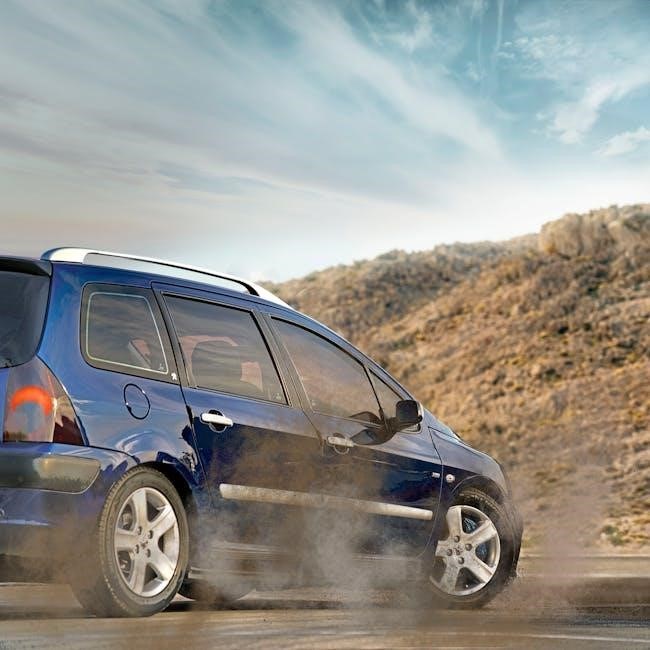
Market Availability and Rarity
The Cayenne manual transmission is rare, with limited production numbers, especially in V6 and GTS trims; Its scarcity makes it highly sought after by enthusiasts and collectors․
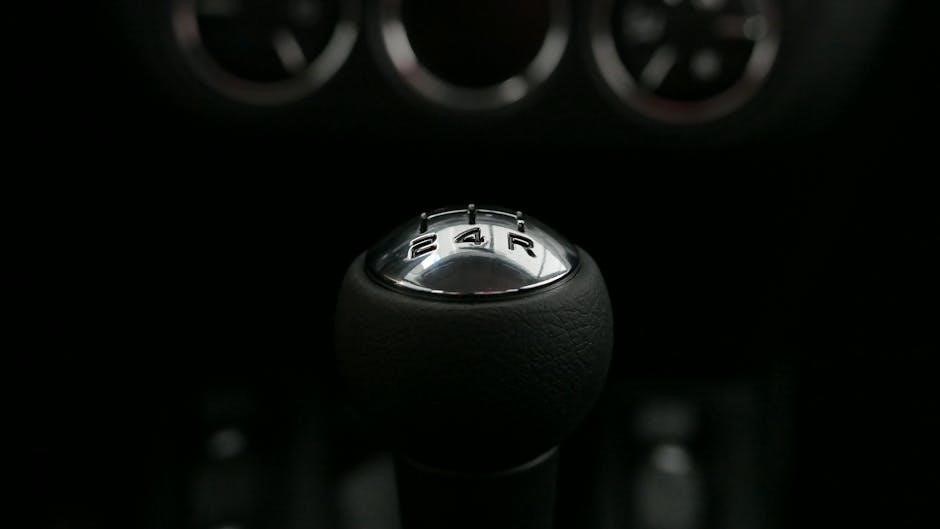
7․1 Production Numbers and Demand
The Porsche Cayenne manual transmission models were produced in extremely limited numbers, particularly in the GTS trim, with only about 125 units made in 2008․ This rarity has led to high demand among enthusiasts and collectors, who prize the manual transmission for its driving engagement․ The low production volume, especially in specific years like 2008, makes these vehicles highly sought after․ As a result, manual transmission Cayennes, such as the GTS, have become unicorns in the used car market, commanding premium prices due to their exclusivity and desirability․ This scarcity further underscores the manual transmission’s appeal to purists seeking a unique driving experience․
7․2 Identifying Genuine Manual Transmission Models
Identifying a genuine Porsche Cayenne with a manual transmission requires careful verification․ Check the Vehicle Identification Number (VIN) using tools like VinCheck․info to confirm the transmission type․ Look for the presence of a clutch pedal and a manual gearshift, as some listings may incorrectly claim a manual transmission․ Review Porsche’s production records, as manual transmissions were rare, especially in higher trims like the GTS․ Cross-reference with owner forums and enthusiasts, as they often document rare models․ Be cautious of listings that lack clear photos of the interior, as this may indicate an automatic․ Genuine manual models, such as the 2008 Cayenne GTS with only 125 units produced, are highly sought after and require thorough verification to ensure authenticity․
7․3 Impact on Resale Value
The rarity of manual transmission Porsche Cayennes significantly influences their resale value․ Enthusiasts and collectors often seek these models, driving up demand and prices․ The manual transmission, particularly in trims like the GTS, is viewed as a sportier, more engaging option, enhancing its appeal․ Lower production numbers for manual variants further boost their exclusivity․ As a result, well-maintained manual Cayennes tend to retain or even increase in value over time․ However, market trends show automatics dominating sales, which may affect resale value in regions where manual transmissions are less preferred․ Nonetheless, the niche demand ensures that genuine manual models remain desirable, particularly among driving purists and Porsche aficionados․
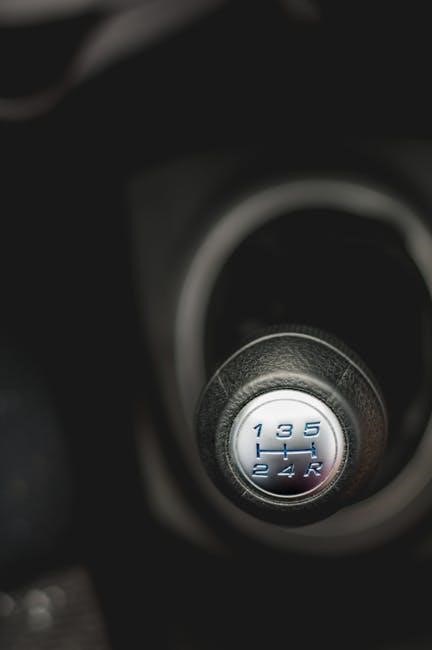
Community and Enthusiast Support
The Porsche Cayenne manual transmission fosters a dedicated community, with enthusiasts sharing knowledge, modifications, and experiences online․ Forums and clubs provide invaluable support, enhancing the ownership experience․
8․1 Online Forums and Resources
Online forums like Reddit’s r/ManualTransmissions and specialized Porsche communities are hubs for Cayenne manual transmission enthusiasts․ These platforms offer extensive discussions, troubleshooting guides, and real-world experiences․ Members frequently share DIY modifications, such as swapping transmissions from the GTS to the Turbo model, and provide insights into rare manual transmission models․ Resources like Cars & Bids and CarGurus list rare manual Cayennes, while websites like Zapier offer tools for enthusiasts․ These online spaces foster a sense of camaraderie and provide invaluable support for maintaining and upgrading the Cayenne’s manual transmission․
8․2 Owner Clubs and Events
Porsche enthusiasts, particularly those passionate about the Cayenne manual transmission, often gather through clubs like the Porsche Club of America (PCA), boasting over 150,000 members․ These organizations host events, including track days, meetups, and rallies, where owners showcase their vehicles․ Events like regional drives and national conventions provide platforms for sharing experiences and admiration for the Cayenne’s manual transmission․ Such gatherings foster camaraderie and offer opportunities to learn from fellow enthusiasts, making them invaluable for those who cherish the unique driving experience of the Cayenne with a manual gearbox․
8․3 DIY Modifications and Upgrades
Enthusiasts of the Cayenne manual transmission often explore DIY modifications to enhance performance and driving dynamics․Popular upgrades include short shift kits,which reduce throw distances, and lightweight flywheels for improved acceleration․ Some owners opt for transmission swaps,such as the TR-82SD from other models,to gain better gear ratios․ Brake upgrades are also common to complement the manual transmission’s sporty feel․ Online forums and communities provide extensive guides and inspiration for these projects, allowing owners to tailor their Cayenne to their driving preferences․ While modifications require careful planning and expertise,they offer a rewarding way to personalize and optimize the vehicle’s performance․
The Porsche Cayenne manual transmission offers a unique driving experience, blending performance with precision․ Its rarity and heritage make it a cherished option for driving enthusiasts seeking control, classic appeal, and timeless driving pleasure․
9․1 Summary of Key Points
The Porsche Cayenne manual transmission is a rare and distinctive feature, offering a unique driving experience․ Available across select generations and trims, it provides precise control and engagement․ The six-speed manual, particularly in the GTS model, stands out as a performance-oriented option․ Enthusiasts appreciate its tactile connection, enhancing the joy of driving․ Despite its niche appeal, the manual transmission has garnered a loyal following․ Market availability remains limited, with specific trims like the base V6 and GTS offering this option․ The manual Cayenne represents a blend of heritage and performance, making it a sought-after choice for purists․ Its rarity and driving dynamics ensure its place in Porsche’s legacy․
9․2 Future of Manual Transmissions in the Cayenne
The future of manual transmissions in the Porsche Cayenne appears uncertain, as automakers increasingly favor automatic and dual-clutch options․ While the manual transmission remains a niche choice, Porsche may continue to offer it in limited trims to cater to enthusiasts․ The Cayenne GTS, with its rare six-speed manual, highlights the appeal of this setup for purists․ However, declining demand and technological advancements in automatics may limit its availability․ Porsche could opt to preserve the manual as a heritage feature or exclusive option, ensuring its legacy for die-hard drivers․ Balancing tradition with innovation, the manual transmission’s fate in the Cayenne will likely depend on market trends and enthusiast demand․

Additional Resources and References
- Visit CarGurus for manual transmission Cayenne listings․
- Explore Porsche forums and communities for owner insights․
- Check VIN lookup tools like VinCheck․info for transmission details․
- Refer to repair manuals and guides for maintenance tips․
10․1 Recommended Reading
For in-depth knowledge, explore resources like Porsche Cayenne Repair Manuals and Transmission Repair Guides․ Visit forums such as Porsche Forums for owner experiences․ Check out CarGurus for manual transmission listings․ Refer to VinCheck․info for VIN-specific details․ Read How to Choose Your Next Car for buying tips․ These resources provide valuable insights into maintenance, troubleshooting, and modifications for the Cayenne manual transmission, ensuring a well-informed ownership experience․
10․2 Useful Websites and Tools
Several websites and tools are essential for Cayenne manual transmission enthusiasts․ VinCheck․info helps verify transmission type via VIN․ CarGurus lists manual transmission Cayennes for sale․ Porsche Forums offers owner discussions and DIY guides․ The official Porsche website provides specifications and maintenance tips․ Transmission-specific tools like Transmission Repair Guide offer repair insights․ These resources help owners maintain, troubleshoot, and enhance their manual transmission Cayenne, ensuring optimal performance and longevity․